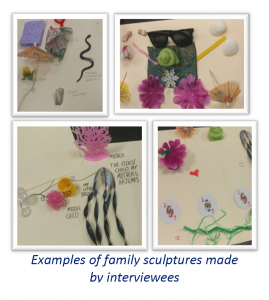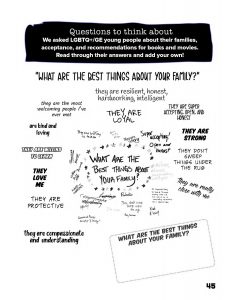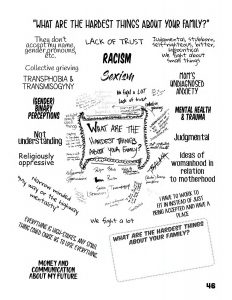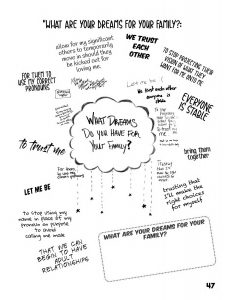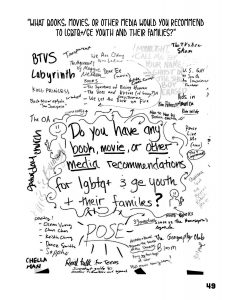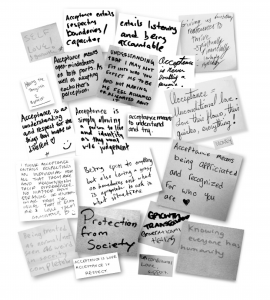Research FrameworkWe intentionally centered the knowledge and expertise of the LGBTQ+ and gender expansive youth in our research, using critical participatory action research (CPAR) as our methodology. CPAR is a framework for conducting public science, or what you might call “people’s research,” – a research that is by the people for the people! We call it critical because it is rooted in feminist, critical race, queer, indigenous critiques of how knowledge is produced, and who gets to be an “expert.” Too often research about LGBTQ+ and gender expansive young people is done without their leadership. We used CPAR to shift this power dynamic. In our project, LGBTQ+ and gender expansive young people worked as architects and designers of the research, centering their experiences and questions about justice and equity. The Beyond Acceptance Research collective is guided by the principle that all people have the capacity and right to ask questions and research the conditions of their lives, and there should be “no research about us without us!” Learn more about CPAR at The Public Science Project, based at The City University of New York Graduate Center collaborates with communities to design and implement participatory action research studies that investigate, speak back to, and re-imagine structural injustice. Learn more at the PSP website: publicscienceproject.org |
MethodsWe developed three semi-structured activities: creative mapping, interviews, and collective brainstorming. Each activity was led by the youth members of our research team. |
Who we interviewedWe embarked on this project to support LGBTQ+/GE youth and families learning to love and support their LGBTQ+/GE children unconditionally. As LGBTQ+/GE youth and adult researchers we had a lot of experiences with families, and we wanted to make sure that our research design would capture as many different kinds of family experiences as possible. To do this we interviewed 23 LGBTQ+/GE young people from across NYC between the ages of 14 and 29. Three quarters of the youth we interviewed were under the age of 20. We used a purposive snowball sampling strategy to recruit for a total of four group interviews, which took place over the course of a month. Phone calls, text message blasts, and physical flyers announcing the opportunity to participate went out to youth and to people who work in schools and service agencies with youth. All youth who participated received $50 for however long they participated. All 23 finished the interview. Half of the youth who participated identified exclusively as queer and/or trans, while others also identified as pansexual, fluid, bisexual, gender queer, and/or gender expansive. Some also described themselves as asexual, FTM, MTF, gender expansive, agender, androphilic, and/or non-binary. A little over two thirds identified as youth of color (including Latinx, African American, Black, Native American, Asian, East Asian, and Middle Eastern), and several participants also identified as multiracial. We feel it’s important to note that half of the young people we interviewed identified as having experienced homelessness or unstable housing. We know from national research that experiencing homelessness is far too common for LGBTQ+/GE youth. This terrible reality is one reason it is vital that families learn to support, affirm, and validate their LGBTQ+/GE children. Many participants who shared experiences of homelessness and/or being estranged from their families, also spoke of finding chosen families that affirm and accept them for who they are and provided a lot of insight about what chosen families can provide LGBTQ+/GE youth when the families they are born into or raised by are not accepting or supportive. |
